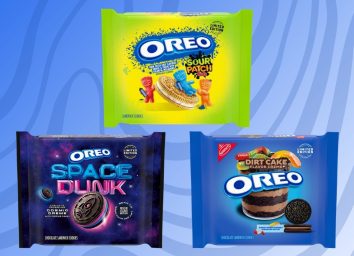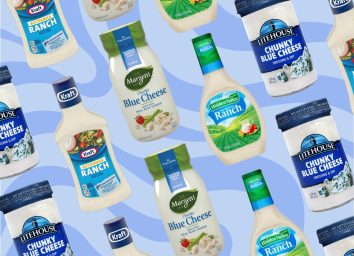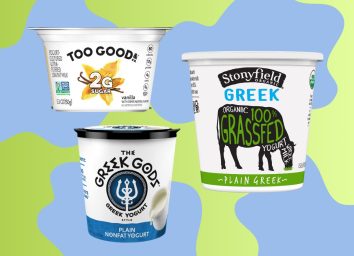31 Best Superfoods for Kids
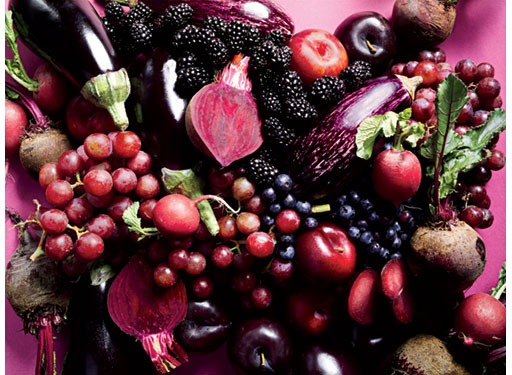
I'm not going to pretend that getting a child to eat what's good for him isn't sometimes a struggle.
"A lot of parents tell me, 'My kids don't like healthy foods,'" says David Katz, MD, an associate clinical professor of epidemiology and public health at Yale Medical School. "'Finicky' is not an excuse. You never hear a parent say, 'My child doesn't like to look both ways before he crosses the street.' They tell him to do it. More kids today will die of complications from bad foods they eat than they will from tobacco, drugs, and alcohol."
So how do you teach the basics of nutrition to a 7-year-old? Even we grownups have trouble understanding which vitamins and minerals we need more of and which complicated chemical ingredients we need to avoid.
Well, here's a simple trick: Just teach your kids to eat as many different colors as they can. And no, I'm not talking about mixing the red, green, and purple Skittles. I'm talking about adding as much of a mix of fruits and vegetables as possible. That's because the colors represented in foods are indicators of nutritional value—and different colors mean different vitamins and minerals.
Not everything on this list is going to appeal to your child's appetite. But there's enough variation here that he or she can squeeze one food from each category into a day's worth of eating. For a fun project, make a multicolor checklist, and have your kid check off each color as he or she eats it throughout the day.
Or do what our parents did and sell them on the kid-friendly benefits trapped inside of spinach, carrots, and the like. Each group of produce offers seriously cool "superpowers" that appeal to kids' deepest desires to dominate math quizzes and monkey bars alike. Feel free to sell these as hard as you want. Hey, even if it didn't end up making you as strong as Popeye, you still ate your spinach, right?
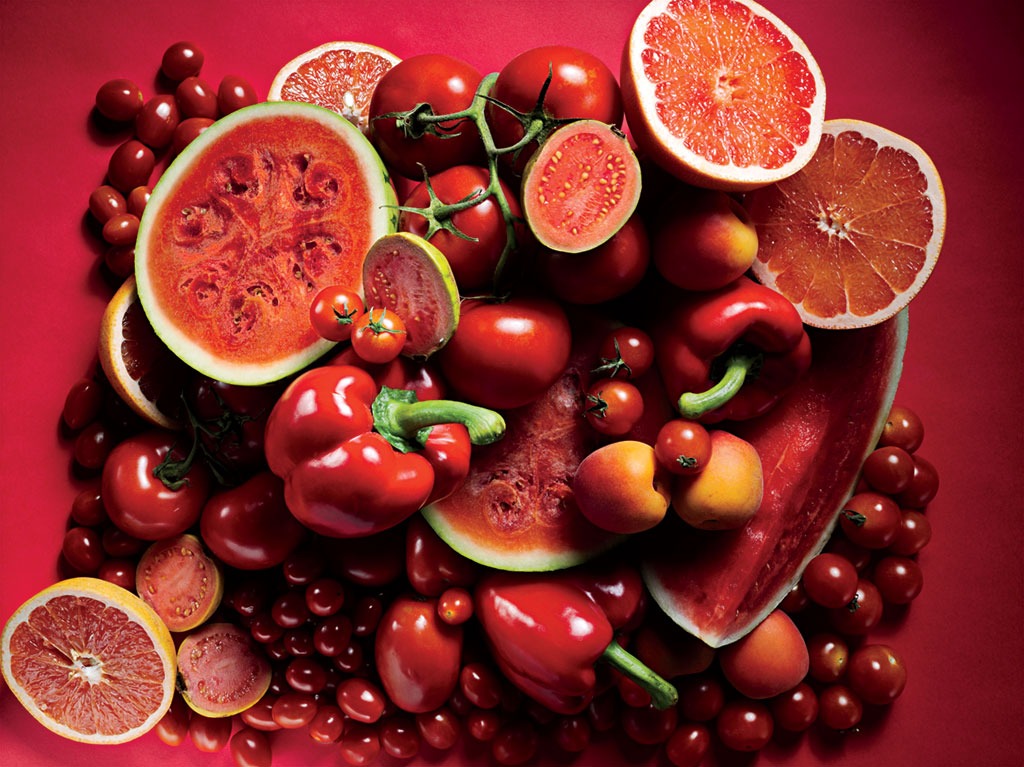
Red
Rosy-hued fruits and vegetables offer a payload of an important antioxidant called lycopene. Lycopene is a carotenoid that is associated with a cache of health benefits, including protecting the skin from sun damage and decreasing the risk of heart disease and certain forms of cancer. Lycopene is most strongly concentrated in the most red of all red fruits: the tomato. What is surprising, though, is that cooked and processed tomatoes have higher lycopene concentrations, so don't shy away from the salsa or marinara sauce.
Superpower: Red food makes you dash like the Flash! There's a reason he wore red: Lycopene-rich foods have been shown to decrease symptoms of wheezing, asthma, and shortness of breath in people when they exercise.
Red Bell Pepper
The reds pack twice the vitamin C and nine times as much vitamin A as their green relatives. They've been shown to aid in the fight against everything from asthma to cancer to cataracts. Slice them up raw and serve with hummus for an after-school snack or buy jarred roasted peppers and puree them into a soup (it tastes just like tomato soup).
Tomato
This queen of lycopene is also packed with antioxidant-rich vitamins A and C, as well as vitamin K, which is important for maintaining healthy bones. Good news for finicky eaters: Canned and cooked tomatoes have been shown to contain more lycopene than fresh, so go crazy with the ketchup, salsa, and marinara sauce. When possible, buy organic: USDA researchers found that organic ketchup has three times the lycopene as nonorganic ketchup.
Watermelon
This summertime favorite is also a big provider of vitamins A and C, which help to neutralize cancer-causing free radicals. Spike a fruit salad with big hunks of watermelon, blend with yogurt, ice, and OJ for a refreshing smoothie, or just hand over a big hunk to the little ones next time you fire up the grill.
Guava
Like most lycopene vessels, guava is packed with vitamins A and C. It also contains heart-healthy omega-3 fatty acids and belly-filling fiber. Get your hands on these in the produce aisle of larger supermarkets or Latin grocers, or simply stock a bottle of guava nectar in the fridge.
Pink Grapefruit
This contains one of the highest concentrations of antioxidants in the produce aisle. Mix segments into yogurt and granola in the morning for breakfast, slip them into salads, or just swap out the OJ for the occasional glass of ruby red grapefruit juice.
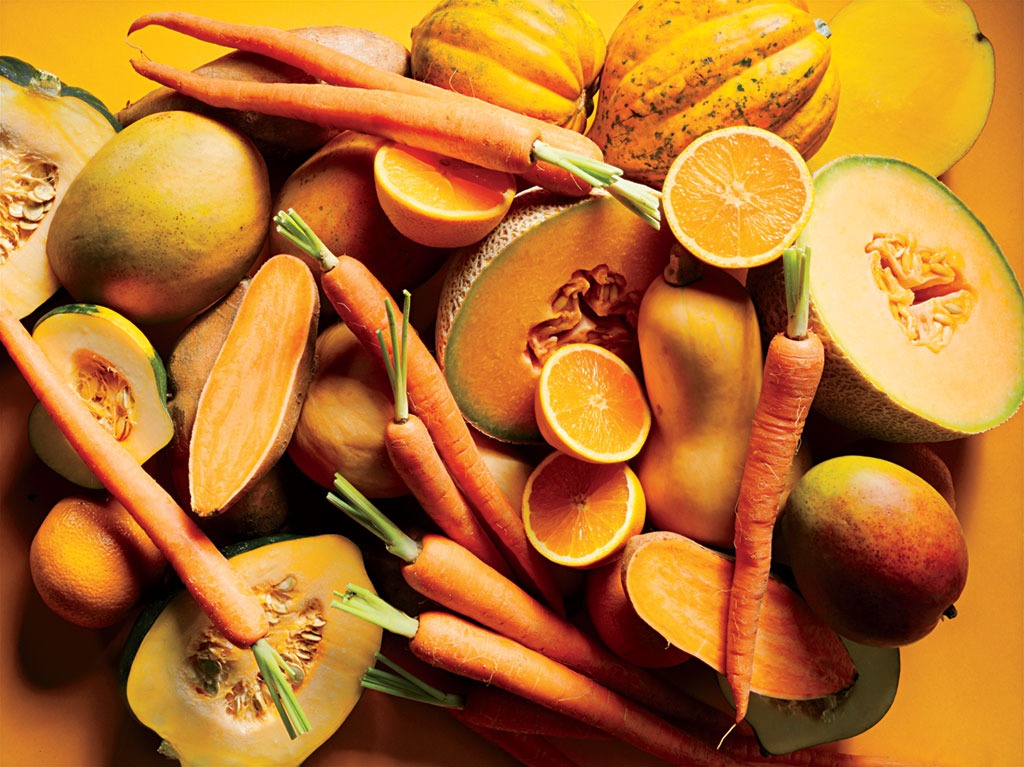
Orange
Beta-carotene is the nutrient responsible for fruits and vegetables' dramatic orange color, and although the carotenoid is present in a host of other vegetables (spinach, kale, and broccoli, for instance), the orange ones have the highest concentration. But the conspicuous hue of this carotenoid does more than just attract your attention; once inside the body, it is converted into vitamin A, a powerful antioxidant that contributes to immune health, improves communication between cells, and helps fight off cell-damaging free radicals.
Superpower: Orange foods give you night vision! That's because vitamin A is vital for creating the pigment in the retina responsible for vision in low-light situations. Just think of the benefits: perfect for beating their friends at hide-and-seek, spying on their brothers or sisters, and spotting bogeymen before they can hide under their beds.
Winter squash
A true party bag of nutrients, winter squash is a great source of a dozen different vitamins, including a host of B vitamins, folate, manganese, and fiber. What does that all mean? It means feed it to your kid! And lots of it! The best way is to cut the squash into 1-inch wedges and bake at 375 F for 40 minutes, until soft and caramelized.
Orange
The vaunted vitamin C monster has a cadre of critical phytonutrients known to lower blood pressure and contain strong anti-inflammatory properties. Juice is fine, but the real fruit is even better. The secret, though, is that the orange's most powerful healing properties are found in the peel; use a zester to grate the peel over bowls of yogurt, salads, or directly into smoothies.
Sweet Potato
The best part about sweet potatoes, outside of the beta-carotene, is that they're loaded with fiber. That means they have a gentler effect on your kid's blood sugar levels than regular potatoes. Substitute baked sweet potatoes for baked potatoes, mash them up like you would an Idaho, or make fries out of them by tossing spears with olive oil and roasting in a 400 F oven for 30 minutes.
Carrot
The snack of choice for Bugs Bunny happens to be the richest carotene source of all. Baby carrots are perfect plain for dipping or snacking on, of course, but also try shredding carrots into a salad or marinara for a hit of natural sweetness, or roasting them slowly in the oven with olive oil and salt.
Cantaloupe
The surge of vitamin A is important not just for the eyes, but also for healthy lungs, and the megadose of vitamin C helps white blood cells ward off infection. Sliced cantaloupe and yogurt make a killer breakfast, or combine the two in a food processor with a touch of honey and lemon and puree into a soup, which makes a great low-cal dessert.
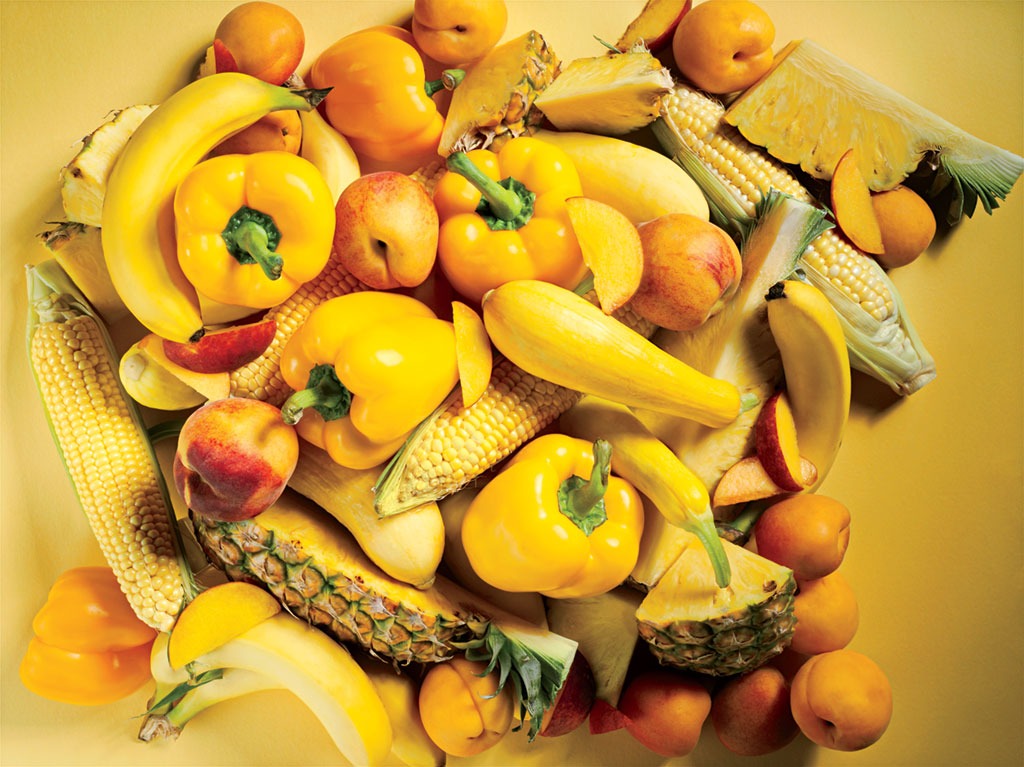
Yellow
Yellow foods are close relatives to orange foods, and likewise, they are rich in carotenoids. The more common yellow carotenoid is beta-cryptoxanthin, which supplies about half the vitamin A as beta-carotene. Studies show it decreases the likelihood for such diseases as lung cancer and arthritis, but since youngsters have more important things to worry about, you're better off selling yellow foods on their superpowers.
Superpower: Yellow foods make you jump higher and play harder! Research shows that foods rich in beta-cryptoxanthin help decrease inflammation in the joints, ensuring a springy step in kids for years to come. Studies also show that this potent carotenoid may improve the functioning of the respiratory system, making beating their classmates in dodgeball and relay races just that much easier.
Yellow Bell Pepper
Yellow bells are vitamin C treasure troves, providing two and a half times the amount you'd get from an orange. Their sweet, mellow flavor is perfect for kids, making them a good addition to stir-fries, sandwiches, or cooked on the grill as a side to chicken.
Corn
This king of the summer barbecue is loaded with thiamin, which plays a central role in energy production and cognitive function. Boost their brains and their energy levels by carefully removing the kernels from the cob with a kitchen knife and sautéing with a bit of olive oil. Eat as is, or sprinkle the toasty corn niblets on top of soups and salads.
Pineapple
This fruit might be high on the list of carotenoid-containing fruits, but it does have other benefits—notably an abundance of bromelain, which has strong digestive benefits. Skewer chunks and cook on a hot grill for a killer dessert.
Banana
Bananas are loaded with potassium, which will help your kids grow strong, durable bones. They also contain a compound called a prebiotic, making it easier for eaters to absorb nutrients of all kinds. Shopping tip: Not all bananas are equally rich in carotenoids. Search for those with a deeper gold to their edible flesh.
Yellow Squash
With huge doses of fiber, manganese, magnesium, and folate, summer squash proves to be a serious nutritional player. Drizzle grilled slices with a bit of basil pesto.
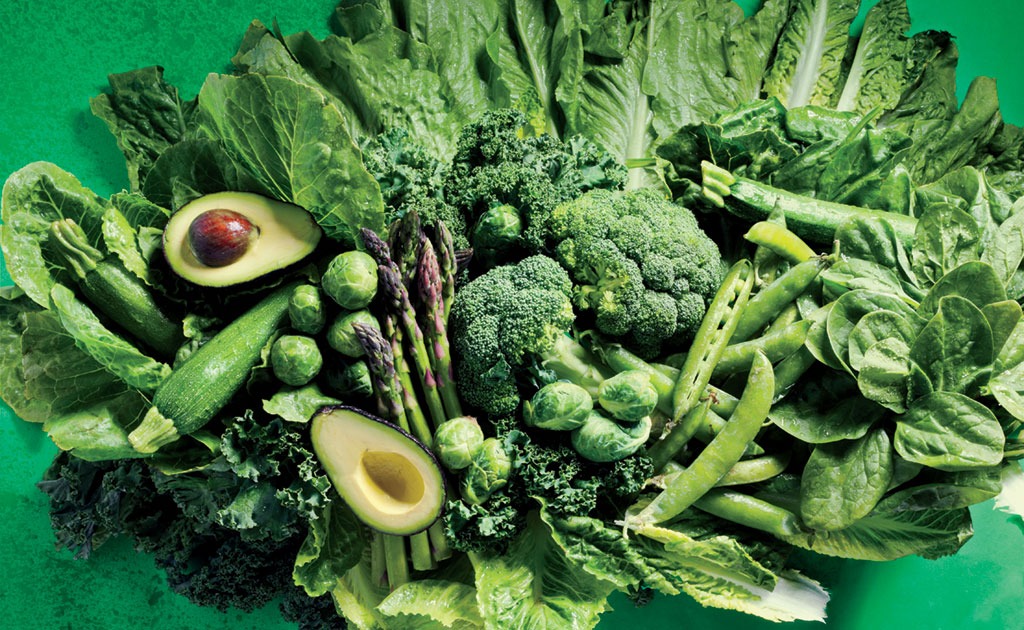
Green
Green Not just potent vitamin vessels capable of strengthening bones, muscles, and brains, green foods are also among the most abundant sources of lutein and zeaxanthin, an antioxidant tag team that, among other things, promotes healthy vision.
Superpower: Green foods give you sharp vision and superhuman healing abilities! Beyond the peeper protection kids get from lutein and zeaxanthin, green fruits and vegetables get their color from chlorophyll, which studies show helps play an important role in stimulating the growth of new tissue and hindering the growth of bacteria. As a topical treatment, it can speed healing time by 25 percent.
Zucchini
A dense and diverse source of nutrients, this summer squash comes with everything from omega-3s to copper. Toss sautéed zucchini with a drizzle of balsamic vinegar, or add grated zucchini to your favorite bread or muffin recipe.
Brussels Sprouts
One of the strongest natural cancer-fighters on the planet, brussels sprouts too often get a bad rap for being boring. Combat the boredom by roasting in a hot oven until crispy and caramelized.
Avocado
This creamy fruit is bursting with monounsaturated fats, the kind that are proven to be great for your heart. Tossing avocado slices in sandwiches and soups is one way to add some healthy fat, but your best bet for slipping them into your kid's diet is to mash 'em up with garlic, onion, and lemon juice for a tasty homemade guacamole.
Asparagus
These potent spears contain a special kind of carbo-hydrate called inulin, which promotes the growth of healthy bacteria in our large intestines, forcing out the more mischievous kind. Wrap spears in thin slices of ham and bake in a 400 F oven until the ham is crispy.
Romaine Lettuce
Whereas the ubiquitous iceberg has nary a nutrient to its name, romaine is bursting at the leaves with everything from bone-strengthening vitamin K to folic acid, essential to cardiovascular health. Other good, nutrient-dense lettuces for salads and sandwiches include Bibb, red leaf, and arugula.
Broccoli
These little trees have 2 days' worth of vitamins C and K in each serving. Top a baked potato with a few steamed florets and a bit of shredded cheese or serve chopped-up pieces alongside a tub of hummus and see if the dip-action doesn't get the kids interested.
Green Peas
Beyond the abundance of vitamins and minerals, a cup of peas contains more than a third of your kid's daily fiber intake—more than most whole-wheat breads. Add frozen peas to a pasta sauce at the last second, or puree them up with garlic and olive oil as a simple, sweet dip.
Kale
Aside from containing nearly 2 weeks' worth of bone-strengthening vitamin K, these deep-green leaves are a low-cal source of calcium; with fewer than 40 calories, each serving has nearly 10 percent. Sauté in olive oil until wilted, then add raisins and crushed pine nuts.
Spinach
This is one of your best sources of folate, which keeps the body in good supply of oxygen-carrying red blood cells. If your kid isn't ready to eat it from the can like Popeye, try boiling it for 1 minute then scrambling into eggs or mixing it into pasta.
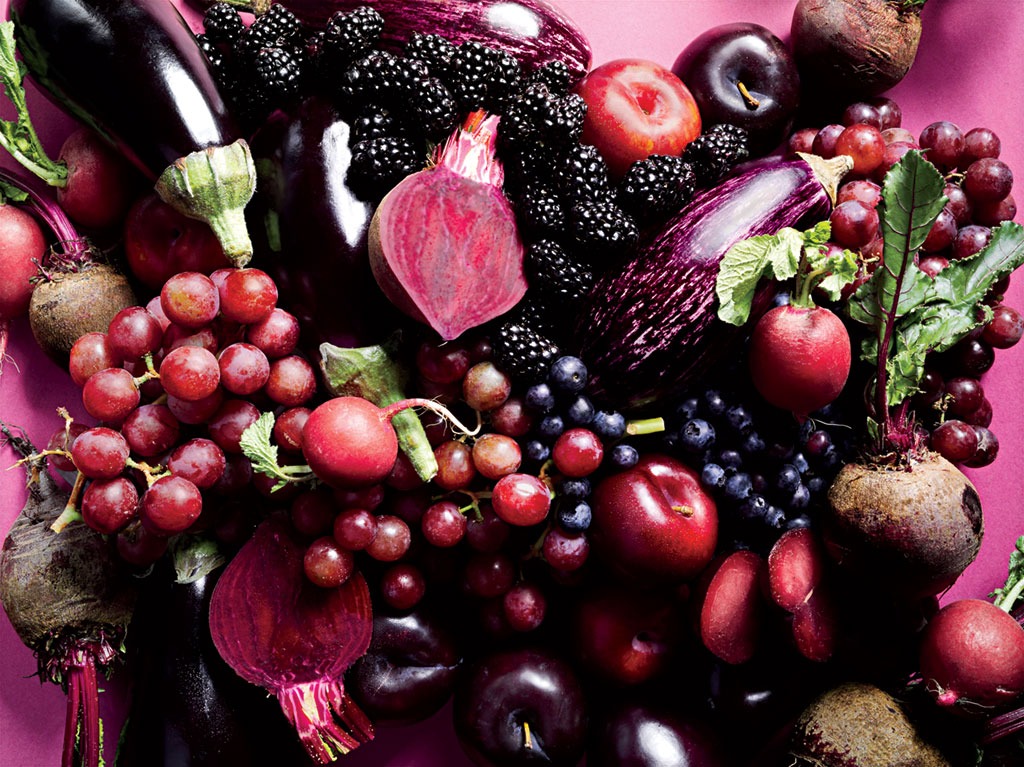
Blue/Purple
Blue and purple foods get their colors from the presence of a unique set of flavonoids called anthocyanins. Flavonoids in general are known to improve cardiovascular health and prevent short-term memory loss, but the deeply pigmented anthocyanins go even further. Researchers at Tufts University have found that blueberries may make brain cells respond better to incoming messages and might even spur the growth of new nerve cells, providing a new meaning to smart eating.
Superpower: Blue foods make you the smartest kid in the class!
Eggplant
A pigment called nasunin is concentrated in the peel of the eggplant, and studies have shown it has powerful disease-fighting properties. Simplify eggplant parmesan by baking 1/2-inch-thick slices and layering them with marinara and cheese.
Blackberry
One cup of berries contains 5 percent of your child's daily folate and half the day's vitamin C. Try pureeing blackberries, then combining with olive oil and balsamic vinegar for a super healthy salad dressing.
Purple Grape
Some researchers believe that, despite their high-fat diets, the French are protected from heart disease by their mass consumption of grapes and wine. Look for a deeper shade of purple—that's an indication of a high flavonoid concentration. Try freezing grapes in the dead of summer for a cool, healthy treat.
Blueberry
The most abundant source of anthocyanins has more antioxidant punch than red wine, and it helps the body's vitamin C do its job better. Sprinkle blueberries into oatmeal, cereal, or yogurt, or mix with almonds and a few chocolate chips for a quick trail mix.
Radish
Nutritional benefits vary among the many varieties of radishes, but they share an abundance of vitamin C and a tendency to facilitate the digestive process. Try serving thinly sliced radishes on a bagel with low-fat cream cheese and black pepper.
Beet
This candy-sweet vegetable derives most of its color from a cancer-fighting pigment called betacyanin. The edible root is replete with fiber, potassium, and manganese. Toss roasted beet chunks with toasted walnuts and orange segments, or grate them raw into salads.
Plum
Another rich source of antioxidants, plums have also been shown to help the body better absorb iron. Roast chunks in the oven and serve warm over a small scoop of vanilla ice cream.
